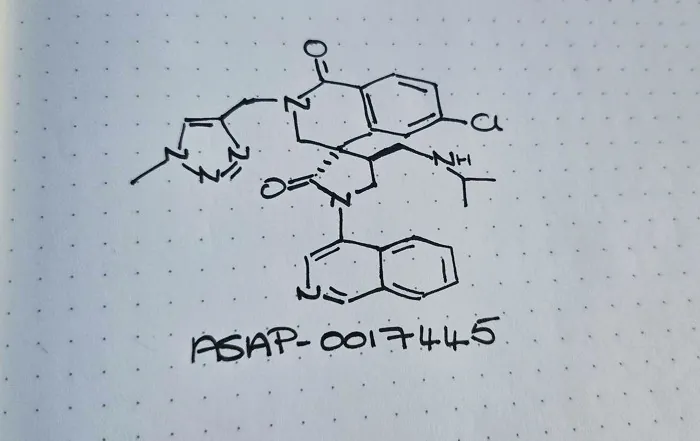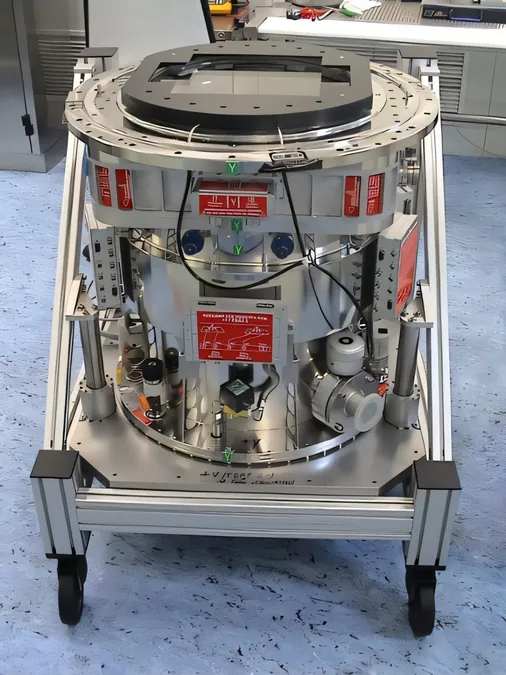
Breakthrough Antiviral Targets Multiple Coronaviruses - Could This Be a Game Changer?
2025-03-26
Author: Sarah
Introduction
At the recent American Chemical Society Spring 2025 meeting, a groundbreaking revelation emerged from Ed Griffen of MedChemica regarding a novel antiviral drug designed to combat multiple coronaviruses, including those causing MERS and COVID-19. This promising antiviral, named ASAP-0017445, was introduced during a digital session focused on developing countermeasures for viruses with pandemic potential.
The Development of ASAP-0017445
ASAP-0017445 is part of the work conducted by the ASAP (artificial intelligence-driven structure-enabled antiviral platform) Discovery Consortium, where Griffen leads the optimization of the main protease (Mpro) targeted by both MERS-CoV and SARS-CoV-2. The initial groundwork for this project builds on the collaborative open-science efforts spearheaded by the COVID Moonshot team during the height of the COVID-19 pandemic.
Research and Optimization Challenges
Over the last five years, a global network of chemists involved in open-science projects has proposed thousands of compounds aimed at targeting the SARS-CoV-2 virus. Griffen underscored the urgency of addressing MERS-CoV, known for its potential risk in future pandemics and its ability to recombine with SARS-CoV-2, prompting the expansion of research into both viruses.
However, the journey to develop ASAP-0017445 was not without challenges. Researchers discovered that the MERS virus's main protease is less efficient at processing peptides compared to that of SARS-CoV-2. This inherent difference rendered their initial lead compound ineffective. To overcome this obstacle, they employed structural data to optimize the molecular design by extending specific ligands, aiming to bolster the compound's potency.
Molecular Design and Testing
Griffen explained that meticulous research led to the identification of an optimal structure that required an amine group at one end of the molecule and a heterocycle on the other. The team engaged in extensive in vitro and in vivo testing, coupled with machine learning, to refine these components to achieve the desired levels of potency, permeability, and stability.
Current Status and Future Implications
While preclinical profiling for ASAP-0017445 is still ongoing, researchers at pharmaceutical chemical provider Enamine have already made strides in scaling up production, successfully synthesizing half a kilogram of the compound.
With the inevitability of future viral outbreaks, Griffen expressed hope that the advancements made in pandemic preparedness could lead to rapid deployment of effective antiviral treatments when the next crisis emerges. This proactive approach aims to help contain outbreaks before they escalate into full-blown pandemics, providing a crucial lifeline for global health security.
Conclusion
Stay tuned for more updates as the results of ASAP-0017445's trials unfold—could this antiviral be the key to securing our defenses against the next pandemic threat?





 Brasil (PT)
Brasil (PT)
 Canada (EN)
Canada (EN)
 Chile (ES)
Chile (ES)
 Česko (CS)
Česko (CS)
 대한민국 (KO)
대한민국 (KO)
 España (ES)
España (ES)
 France (FR)
France (FR)
 Hong Kong (EN)
Hong Kong (EN)
 Italia (IT)
Italia (IT)
 日本 (JA)
日本 (JA)
 Magyarország (HU)
Magyarország (HU)
 Norge (NO)
Norge (NO)
 Polska (PL)
Polska (PL)
 Schweiz (DE)
Schweiz (DE)
 Singapore (EN)
Singapore (EN)
 Sverige (SV)
Sverige (SV)
 Suomi (FI)
Suomi (FI)
 Türkiye (TR)
Türkiye (TR)
 الإمارات العربية المتحدة (AR)
الإمارات العربية المتحدة (AR)